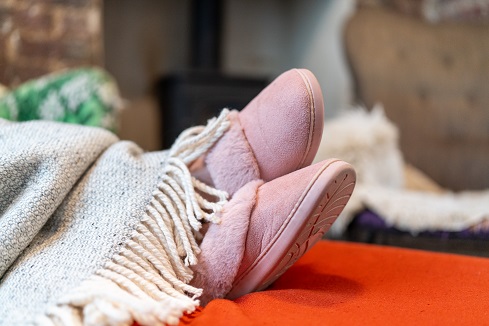You’ve got a home full of appliances and they all use energy to run. But what if you want to live an eco-friendlier life and you’re on a mission to reduce your carbon footprint? Well, you’ll be pleased to know, you can. Going green at home doesn't have to be difficult or inconvenient. It can even be fun. So, if you’ve decided you want to go greener, we’ve got some useful tips to get you started.
Cook greener
Using the right appliance

One of the first things to consider if you want to live an eco-friendlier life in the kitchen, is whether you’re using the appropriate appliance to cook. Obviously, an oven is best for baking while a microwave is ideal for reheating leftovers and simple one-dish meals. But there are eco-friendlier options you can consider.
Slow cookers aren't as expensive as ovens or microwaves either. Not only can they help reduce time spent slaving over the dinner, but they cut down cooking time by using less energy and producing less heat. In fact, slow cookers use around the same energy as a lightbulb!
The last choice to consider is an air fryer. These have become all the rage in recent years and for good reason. Cooking times are generally shorter with an air fryer (depending on what you’re cooking). Shorter cooking times means less energy used. But they’re very energy efficient anyway; costing around £35 a year to use. It’s estimated to cost around £207 to use a standard electric cooker, so you’re looking at some big savings too.
Wash greener
Fill it up
Your dishwasher and washing machine obviously need water to run. But it’s the energy needed to heat that water that you might be looking to cut back on.
Using your dishwasher or washing machine, only when it’s full, will reduce both your energy and water consumption over time. Be careful not to overfill it though. If you do, you only run the risk of your glasses and dishes coming out semi-clean because the water couldn’t reach everywhere. You’ll then have to run another cycle, using more energy than you needed to. Hand washing does use less power than a dishwasher, but it also uses a lot more water. The most water-efficient full-size dishwasher uses almost 10 times less water to wash the same amount of dishes as washing them by hand.
Sort your washing
Instead of sorting your laundry just by colour, you can try sorting by fabrics too. Certain items may be able to go a few more wears without needing a wash. Others may have specific laundering instructions to keep their shape and colour. Familiarise yourself with the labels on your clothing and fabrics to find out the best way to wash and look after them. Certain fabrics like linen and silk won’t like going in your tumble dryer!
Store greener
Get organised

Fridge freezers don’t strike anyone as obvious culprits when it comes to high energy bills. Keeping your fridge and freezer compartments clean and defrosted is the first step to getting greener. Any ice, especially ice over a quarter of an inch thick, will act as a cosy little insulating jacket for the rest of the freezer compartment. This is great if you’re a warm-blooded human, but for your freezer it means having to work extra hard just to keep all your food below freezing.
Also, keep your fridge freezer nice and tidy. That way you’ll spend less time rummaging about with the door open, helping your freezer to stay nice and chilled. While we’re on that subject…
Choose the right temperature
To be sure that you’re saving energy, your fridge should be kept at a temperature of about 3 to 5 degrees Celsius. Your freezer compartment should be set to around -18 degrees Celsius. These are the optimum temperatures to slow down the growth of bacteria. So, your favourite food will remain fresh without using unnecessary amounts of added energy.
Remember, if you've made changes to temperature settings, it can take about 24 hours for your appliance to adjust. This especially true with fridges and fridge freezers.
Eco warrior washing
The eco setting is a standard feature on washing machines and dishwashers these days. It usually says something like ‘eco 50’ — the number indicating the temperature it reaches. Yet it’s a setting that many of us overlook, often believing rumours that the quality of the wash is somehow inferior.
In fact, it uses less water and less energy to wash your clothes or dishes, while still providing the same quality of wash as a standard one. If there’s a downside, it’s simply that it takes longer than a standard wash — which admittedly sounds counterintuitive.
Because the water doesn’t get as hot though, it needs to run for longer to achieve the same level of cleaning. But when you know that 90% of the energy consumption in a wash comes from heating the water — you realise you’re making some big energy savings — you just have to wait a little longer. You’ll also reduce water usage by between 20 to 40 percent too.
Of course, some fabrics will need a more intensive programme and some stains will need to be washed at a higher temperature — so the eco wash won’t be suitable.
But for your average wash, opt for the setting where you see it on your eco-friendly appliances. You’ll save energy, water and money and you won’t be compromising on the quality of the wash. Win win!
Unplug appliances when they’re not in use

A quick and easy way to reduce your carbon footprint is to unplug your appliances when they're not in use. Electronic appliances still draw power when they're turned off. Over the course of a year that can add up to a lot of wasted energy that you’re still paying for.
If you're not using an appliance — unplug it. We’ve got a lot more information on this and how to identify the worst appliances to leave on standby.
Understanding energy labels
Electrical appliances in the UK are all given an energy label. These provide you with some valuable insights to help you choose the most eco-friendly options. It’s a rating system that’s been in place across both the UK and Europe for more than 25 years.
These energy labels help if you’re keen to reduce the emissions your home appliances produce and your overall carbon footprint. Learn more about understanding UK energy ratings to help you choose greener appliances for your home.
Recycle your appliances
So that’s it. You’ve come to the end of the road with your oven, fridge, washing machine… whatever. When an appliance doesn’t work anymore, and it’s just sitting in the corner taking up space — don't just dump it. Recycle it! Loads of appliances can be recycled and turned into new appliances or even other objects these days. Check with your local recycling centre to see if they take used appliances. Find out what kind of recycling process they can offer for your once faithful domestic servant.
Go on, they deserve it.
Our blog is loaded with more related articles

Energy saving tips
Tips for using appliances in a cost-effective way
Minimise energy usage and household costs by learning how to use your appliances more efficiently. Get tips and tricks for a gr...
Read more

Energy saving tips
How to hack the energy crisis
We've all seen the distressing headlines about soaring energy bills, water bills, and household costs. This is especially c...
Read more

Energy saving tips
How to save energy at home in winter
The changes we’re suggesting are so small, you’ll forget you’ve made them — that is until you check you...
Read more
